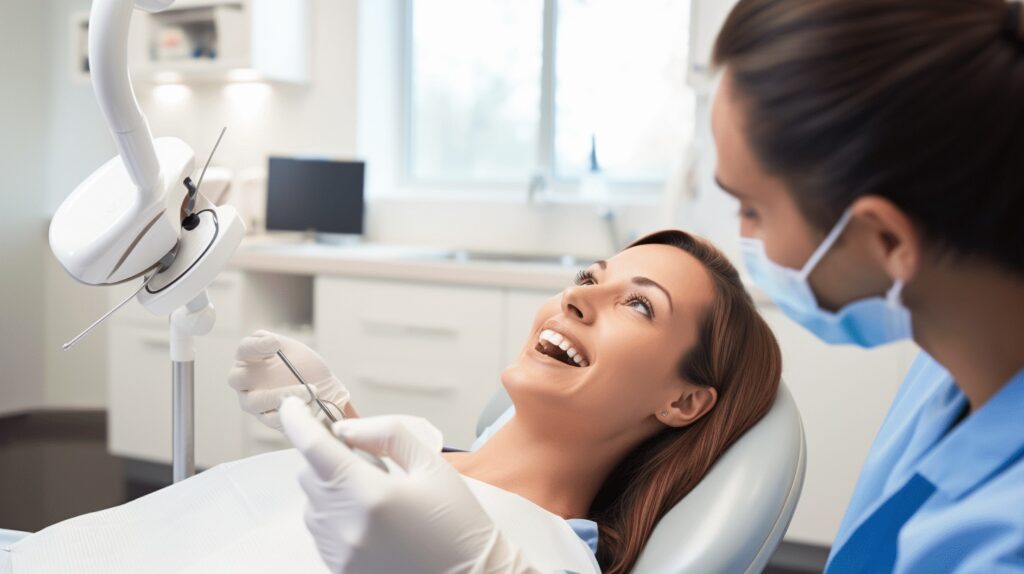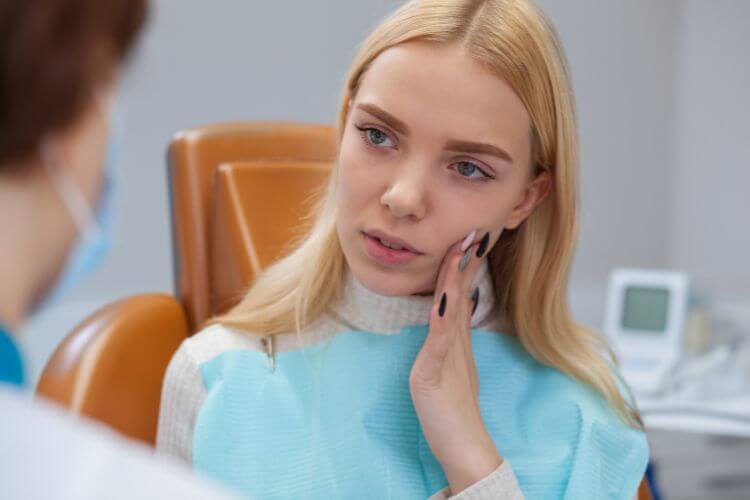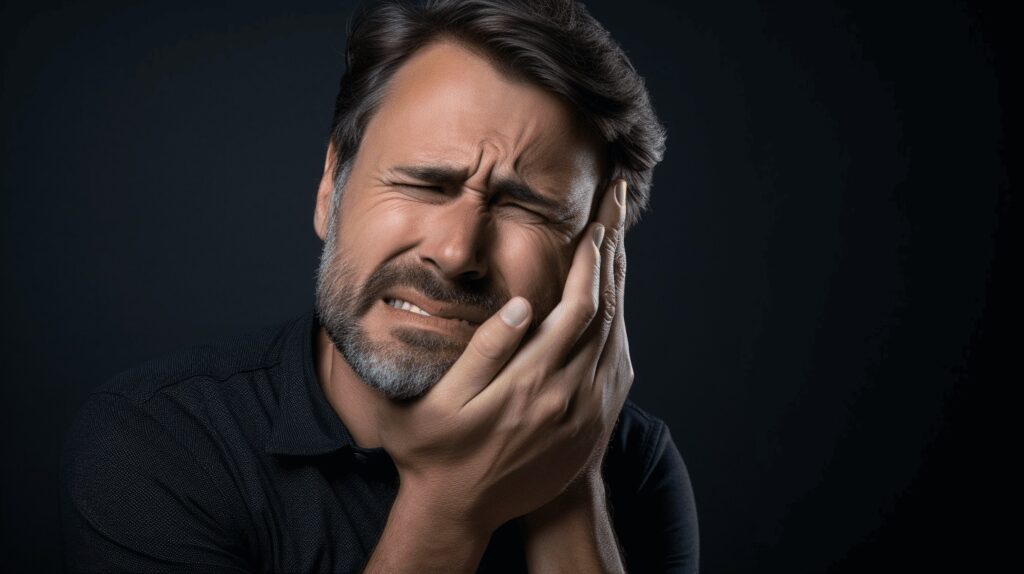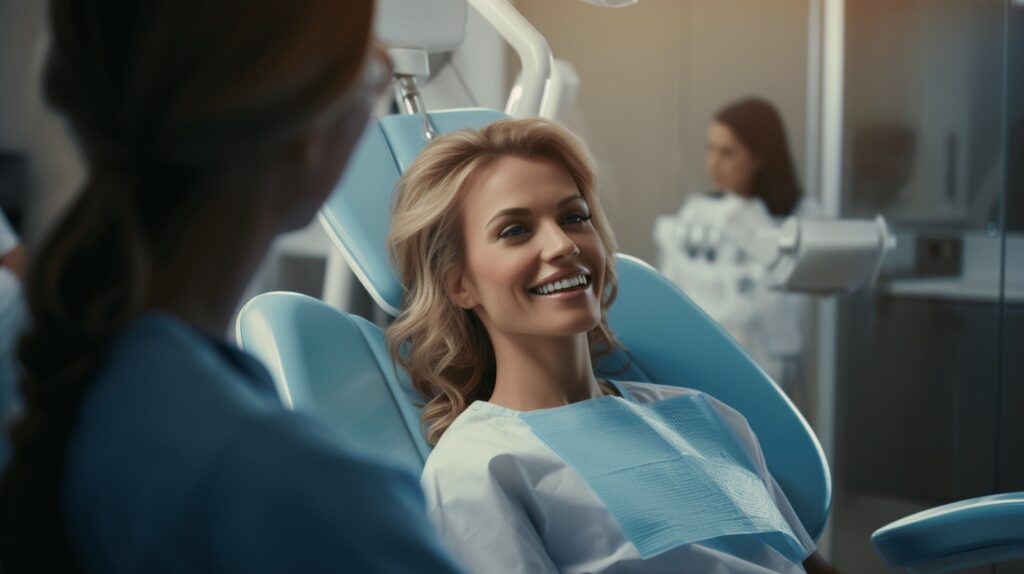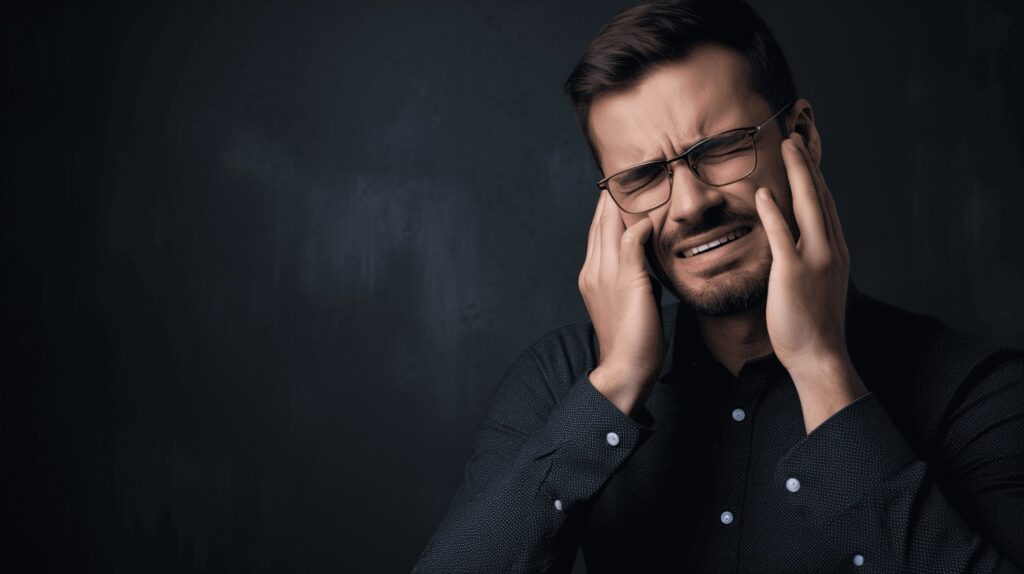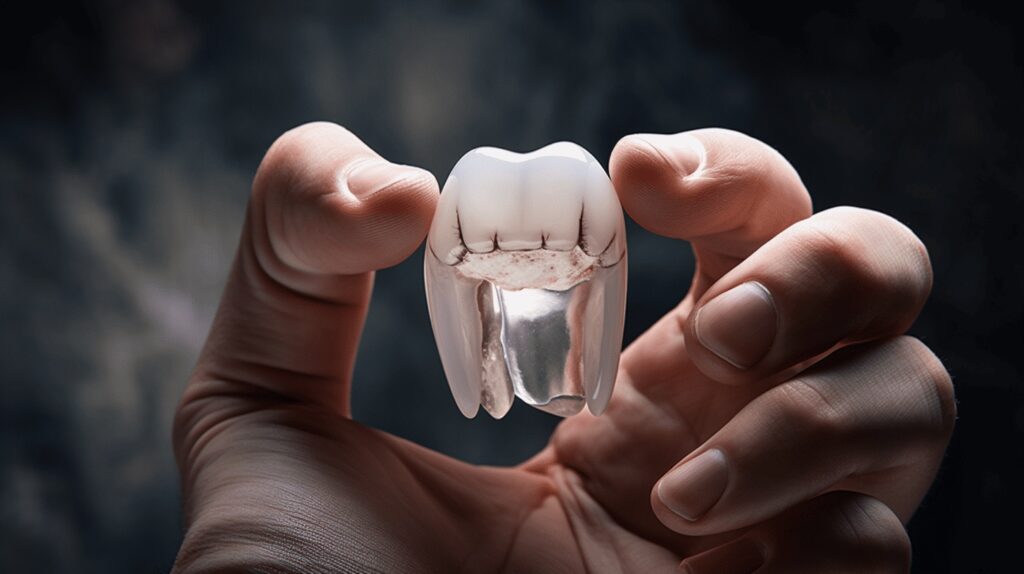When it comes to maintaining oral health, preventive measures can only do so much.
Unfortunately, dental emergencies can happen anytime, anywhere – be it from a sudden toothache, a chipped tooth from a nasty stumble, or even weekend warrior-nature intense workouts resulting in an unexpected dental injury. 😱 This can sometimes force us to seek immediate dental treatments, often at a local emergency department (ED).
The experience? Let’s just say between the sterile smell of antiseptics, the cooing monitors, and the rush of medical personnel, it’s an environment that we’d rather avoid if possible. Yet, the rising trend of emergency room visits for dental conditions might prompt you to think…Why is it so? 🤔
In this piece, we’ll delve into the world of dental emergencies, analyze statistics on dental-related ED visits, and discuss the economic impact of these incidents. We will also explore the effect of Medicaid dental benefits on ED visits, and finally, we will provide tips on managing dental emergencies effectively.
So, let’s understand, learn, and equip ourselves better for those not-so-pleasant surprises. After all, knowledge about the issue at hand makes one feel less helpless and more in control, right? 👍
Let’s dive in, shall we?
Table of Contents
Quantifying the Issue: Dental-Related ED Visits
We all know that a dental emergency can strike at any time, right? But did you know how common they actually are? There’s a need to delve into the numbers to understand the magnitude completely.
In this section, we will take you through an engaging analysis of statistical data to quantify and gauge the impact of dental-related emergency room (ED) visits.
Statistical Overview
First, let’s plunge into an overview of the situation. Based on recent figures, there were over 2 million dental-related emergency visits in the US back in 2018 🏥. Now, if we were to break that down, it means there were around 615.5 visits per 100,000 population!
Quite staggering, don’t you think?
Comparison of Treated and Released vs Hospital Admission Cases
Looking at the scale of these visits, it’s interesting to see how they played out once the patients reached the hospital. In fact, nearly 95% of these visits resulted in the patient being treated and released, while the remaining 5% led to hospital admissions 🚑.
This reflects how most dental emergencies could be managed and treated without prolonged stays in the hospital.
Proportion of Dental-Related ED Visits in Overall ED Visits
When we talk numbers, it’s always crucial to have them in the right context. So, you might wonder, what percentage of overall emergency department visits are spawned by dental-related problems? Well, our analysis presents that dental-related emergency visits constitute about 1.5% of all ED visits in the US. This might seem small in comparison, but in the vast sphere of medical emergencies, it certainly represents a significant chunk 😲.
In light of these data, we realize how pressing the issue of dental-related ED visits is. These statistics underline the substantial burden that dental emergencies place on our healthcare system, calling for increased efforts in preventative dental care and improved access to oral health services.
For everyone out there, let’s take it as a reminder to never neglect our dental health. It affects not just ourselves, but our healthcare system at large. After all, a smile is worth a thousand words – but let’s make sure those words are of praise and not of pain 😊!
Effect of Enhanced Medicaid Dental Benefits on Dental ED Visits
Can you recall the last time you visited a dentist? Even though it’s a beneficial, often necessary visit, many often avoid it due to the potential high cost, especially if they lack proper health insurance. We’re here today to take a deep dive into a beneficial change that you may or may not be aware of. This change is regarding the importance and effect of enhanced Medicaid dental benefits and how they correlate with dental ED visits.
According to the fascinating data we’ve come across, there has been a noteworthy 14.1% decrease in dental ED visits in Medicaid expansion states. This data points to the interesting trend that states with more generous Medicaid dental benefits for adults tend to see reduced ED visits.
To clearly understand this, we need to comprehend that dental health is a significant part of our overall health and wellbeing. If not taken care of appropriately, poor oral health can lead to dire consequences. Let’s take a glance at the reasons behind this trend:
- Improved Benefits: Enhancements in Medicaid dental benefits have made dental care more accessible and affordable for adults, leading to more regular check-ups and less reliance on emergency departments for dental issues.
- Periodic Check-ups: Offering comprehensive dental benefits affects health outcomes positively by enabling adults to have regular dental check-ups. Thus decreasing the likelihood of emergencies.
- Preventive Measures: The reduced ED visits can also be attributed to the increased education and prevention measures that come with augmented dental benefits. In fact, routine dental care can prevent most dental emergencies.
By looking at the 14.1% decrease in dental ED visits, it’s clear that enhancing Medicaid dental benefits plays a paramount role in improving overall dental health, reducing reliance on emergency departments, and thus mitigating healthcare costs.
So, if you’re in a Medicaid expansion state, don’t forget to tap into your dental benefits. It’s not only good for your health, but it also helps in reducing the overall strain on the healthcare system. What a bonus, right? 🎉
Prevalence of Untreated Dental Caries in the US
Despite the importance of oral health, many people neglect their dental care which leads to issues like untreated dental caries. “Caries”, as we in the dental field call it, is more commonly known as tooth decay.
It doesn’t just affect your smile but can lead to more serious health problems if not addressed timely. Let’s delve into the situation here in the United States, exploring the noteworthy prevalence among both children and adults.
Among Children
It’s hard to imagine, isn’t it? The thought of young children wrestling with tooth decay. Yet the statistics are alarming. From the period of 2015 to 2018, around 13.2% of children aged between 5 to 19 years had untreated dental caries. That’s not just a teeth issue. It’s a potential hindrance to their overall development:
- Tooth pain can lead to difficulty in eating and sleeping, thereby impacting a child’s growth.
- Many children often miss school due to dental problems, setting back their education.
- Self-esteem issues can arise due to decayed teeth, affecting their social interactions.
These complications further stress why untreated dental caries can’t fly under the radar. It’s a health concern that requires immediate attention.
Among Adults
We often espouse the phrase “growing up comes with responsibilities”. Yet, when it comes to oral hygiene, it seems not all adults are as responsible as they should be. Astonishingly, in the same interval, 25.9% of adults between the ages of 20-44 years had untreated dental caries. 🦷
The reasons for this foreseeable health problem can be several:
- Lack of dental insurance, translating to high out-of-pocket costs.
- Limited access to dental care, especially for those in underserved areas.
- Fear or anxiety associated with dental visits, often derived from past experiences.
By highlighting these statistics and driving discussions around them, we’re hoping to raise awareness and encourage more people to take their oral health seriously.
If you’re part of the statistics, seek help. If you know someone who might be, lend your support. Let’s make untreated dental caries a problem of the past, one healthy smile at a time.
The Economic Toll of Atraumatic Dental Pain in ED Visits
When we talk about health economics, dental issues may not appear on top of the list. But you’d be surprised! 🙀Yes, dental pain, particularly non-traumatic or atraumatic dental pain, can have a significant impact on emergency department (ED) visits, increasing the usage of healthcare resources.
Consider this: according to our study, the annual cost for ED visits due to atraumatic dental pain mounts up to a whopping $2.4 billion! 💰That’s a huge toll for something that often gets overlooked in health discussions.
While the figure is indeed substantial, it’s critical to examine it with a broader lens. Atraumatic dental pain can range from tooth abscesses to cavities, compounded in severity due to neglected oral health or delayed dental care 💔. These cases result in unwarranted ED visits, contributing to the overall patient load and incessant pressure on the healthcare system.
Yet, the true cost of atraumatic dental pain is more than just monetary. It also covers critical factors such as:
- Patient Discomfort: With excruciating pain disrupting daily activities, quality of life undoubtedly suffers.
- Workforce Absenteeism: Pain-driven ED visits often mean loss of productive workdays.
- Healthcare Strain: Frequent usage of healthcare resources for preventable dental issues can put undue strain on the system.
In essence, the persistent frequency of ED visits due to atraumatic dental pain reflects a larger problem. It highlights a gap in our healthcare delivery system where preventive and oral healthcare aren’t prioritized to the extent they should be. 💔
While the $2.4 billion economic toll is a fact that stings, it can also serve as a call to action. Rather than losing billions tending to preventable dental issues in emergency departments, we should divert attention and resources towards enhancing oral health awareness, preventive care, and accessible dental services. Agree? 🤝💫🩺
We hold the keys to resolving this widespread issue. Through informed policy decisions and strategic healthcare planning, we can alleviate the enormous toll atraumatic dental pain has on our healthcare system – economically, resource-wise, and even considering human discomfort. Who’s with us on this?
Analysis of Dental Emergency Encounters
Diving into the world of dental health, it’s stunning to discover that approximately 10% of all dental encounters are actually linked to dental emergencies. Picture this: a sudden, severe toothache that just won’t subside, or maybe a broken tooth after a nasty fall. Unwanted situations that lead you rushing to the dental emergency room. Yes, they happen more often than you might think!
To put things into perspective, there were a staggering 1.8 million emergency department trips for dental-related conditions in 2019 alone. 😲 Now, that’s a huge number, right? But what’s more thought-provoking is the fact that emergency room visits for preventable dental conditions range between 1.15% and 2.5% of all emergency room visits. 🤔
So, why do so many preventable dental issues end up as emergencies?
Well, it’s a mix of factors. For one, people often neglect regular dental check-ups, brushing them off as unnecessary, inconvenient, or expensive. Little do they realize that these routine visits serve a more expensive cause, helping detect potential dental problems early before they escalate into bigger, costlier, and nastier issues.
Also, many folks tend to ignore seemingly minor dental issues until they blow up into major pains-literally. A little tooth sensitivity here, a minor gum swelling there-it’s easy to dismiss these signs until they explode into unbearable pain or dental dysfunction, catapulting you into the emergency room.
Let’s change the narrative, shall we? The good news is that most dental emergencies can be evaded with robust dental hygiene habits and regular check-ups. Just think about the domino effect when you brush, floss, and swish the right way-no dental pain, no emergency room rush, and, of course, a happy, healthy smile. 😊
Remember that caring for our teeth is a lot like loving our bodies-the more attention and care we give, the happier and healthier they return the favor. We would really benefit by thinking of our dental health as a vital part of our overall health and well-being. 🦷
So let’s pledge to be more proactive in our dental care regimen, thereby potentially reducing our share in that 10% chunk of dental emergencies! It’s time to take charge and show our dental health some love. After all, a smile can be the prettiest thing you wear, so let’s make sure we set the perfect stage for that winning grin. 🥰
Increasing Trends in Emergency Room Visits for Dental Conditions
Unnoticed and untreated dental issues have a knack for turning into urgent matters that require immediate medical intervention. Lately, we’re seeing an upward trend in emergency room visits for dental conditions, and it’s time we had a chat about it.
According to the American Dental Association, the beautiful land of the Stars and Stripes is catching on to this trend, with around 2 million annual emergency department visits being chalked up to nontraumatic dental problems. 🏥
Why, you might ask? The reasons are as varied as the people themselves!
- One common cause is the neglect or delay of routine dental check-ups. Just like your car needs regular maintenance to keep running smoothly, so do your teeth need their share of TLC (Tender Love & Care).
- Often, insurance coverage—or lack thereof—becomes a roadblock on the path to dental wellness. With a considerable chunk of the population uninsured or underinsured, the necessary preventative dental care becomes a luxury instead of a basic human right.
- Time can also be a factor. Those long, Topsy-turvy work schedules might rob you of the necessary time to visit a dentist, leading to worsened conditions that finally land you in the ER.
- Lastly, dental anxiety is a real thing, folks! Studies show that certain adults would rather wrestle a grizzly bear rather than sit on a dentist’s chair. Okay, that might be hyperbole, but the point stands — fear can lead to avoidance, and avoidance leads to, you guessed it, emergency room visits.
These reasons, whipped together, have created a surge in dental-related emergency room visits. It’s a bitter pill to swallow, but swallow we must because ignoring it is definitely not a solution.
Plus, remember that emergency medical practitioners are generally not fully equipped to provide comprehensive dental care. In contrast, they are well-versed in alleviating pain and symptoms to tide you over until you can see a dentist.
Now, we’re not out here trying to scare you into making that dental appointment you’ve been putting off for weeks (okay, maybe a little). But we are strong believers in prevention being better than the cure. So, in this matter, as in all health-related matters, stay informed, stay proactive, and keep those pearly whites sparkling. ✨🦷
Effective Measures in Dental Emergencies
Life unfolds unpredictably. One moment you’re casually munching on crispy popcorn, and the next you’re dealing with an excruciating toothache that just won’t go away.
The popcorn scenario is an allegory for the unforeseen nature of dental emergencies. However, it’s a relief to know that certain measures can be taken when suffering from such a predicament. These approaches act as immediate buffers against intensifying discomfort, preceding your trip to the dentist’s clinic.
In this write-up, we’ll explore effective measures that can be implemented in case of dental emergencies, and connect them to some Common Dental Emergency Solutions that professionals usually recommend.
Let’s consider some teeth-gnashing situations:
- Knocked-Out Tooth: Don’t panic if your tooth has been knocked out. Rinse the tooth gently (don’t scrub it!) keeping it by the crown, not the root. Try to place it back in the socket. If not feasible, immerse it in milk (yes, you read that right, milk!). See your dentist immediately.
- Toothache: To alleviate a toothache, rinse your mouth with warm salty water, and apply a cold pack to your cheek where it hurts. Over-the-counter pain relievers can also help, but remember they are but temporary solutions. Likewise, do not apply aspirin directly onto aching gums; it might cause a burn. 🛑
- Lost Crown or Filling: Lose a crown? Don’t lose your cool. If possible, slip it back onto the tooth. Toothpaste or dental cement can facilitate adherence. Lost a filling? Stick a piece of sugarless gum into the cavity as a provisional block. Seek dental aid ASAP. 👨⚕️
Bear in mind that these are just first-aid measures to provide initial relief and prevent further damage. They are no substitute for professional dental care.
Dental emergencies require timely intervention, often to stop the pain, but also to maintain the health and aesthetics of your teeth. So, don’t wait for a toothache to become unbearable before seeking help. Make a beeline for your dentist at the first signs of discomfort. The faster you react, the higher the likelihood of saving a troubled tooth. And remember, pain is the body’s way of telling you something’s not right.
Sure, Google can dish out a plethora of home remedies, but it also might send you spiraling down a wormhole of worst-case scenarios. Decoding your dental dilemmas with a professional is always the better choice.
With our guide on Common Dental Emergency Solutions, maybe you can bypass the midnight panic and be prepared for any dental disasters that might be lurking around the corner.
Conclusion
The escalating trend of emergency room visits for dental emergencies reinforces the essential role dental health plays in our overall wellness. Over the years, untreated and ignored dental conditions have not only amplified the pain thresholds of patients but also led to a colossal economic toll.
The situation is such that dental emergencies are now gradually becoming a public health issue, neither confined to a certain age group nor a specific socio-economic status.
However, accessible and affordable care like what we offer at Wilshire Smile Studio can make all the difference. Our dedicated and experienced team is ever ready to provide immediate relief from a dental emergency, while also offering preventative dentistry to maintain your oral health before it ever gets to the point of emergency.
Our personalized care approach from the team ensures you leave our practice with a healthy and gleaming smile, the one that you deserve.
After all, excellent dental health is foundational to a confident smile, and a confident smile contributes to your overall happiness and wellbeing.
So, let’s join hands in prioritizing dental health, because together, we can create and maintain beautiful smiles one appointment at a time.
Reach out today by booking a free appointment or calling 323-DENTIST (323-336-8478) and step into the world of comprehensive, personalized, and affordable dental care.
Frequently Asked Questions
1. What are dental emergencies?
Dental emergencies are situations that require immediate professional dental attention. These can include severe toothaches, knocked-out teeth, broken or chipped teeth, loose fillings, and abscesses.
2. What should I do if I experience a dental emergency?
If you experience a dental emergency, it’s important to remain calm. Contact your dentist immediately for guidance. In the meantime, you can rinse your mouth with warm saltwater, apply a cold compress to reduce swelling, or take over-the-counter pain relievers.
3. What immediate measures can be taken in case of a knocked-out tooth?
If a permanent tooth is knocked out, handle it carefully by the crown (avoid touching the root). Rinse the tooth with milk or saline solution, if dirty, and try to reinsert it into the socket gently. If that’s not possible, place the tooth in a glass of milk or saliva and promptly seek emergency dental care.
4. Can I temporarily relieve toothache at home before seeing a dentist?
To temporarily relieve toothache at home, rinse your mouth with warm saltwater, use floss to remove any trapped food particles, and apply a cold compress to alleviate swelling. Avoid placing aspirin or any painkillers directly on the tooth or gums, as it may cause irritation.
5. What to do if a filling comes loose or falls out?
If a filling comes loose or falls out, try to keep the affected area clean by gently brushing around it. Avoid chewing on that side of your mouth and schedule an appointment with your dentist as soon as possible to prevent further decay or damage.


